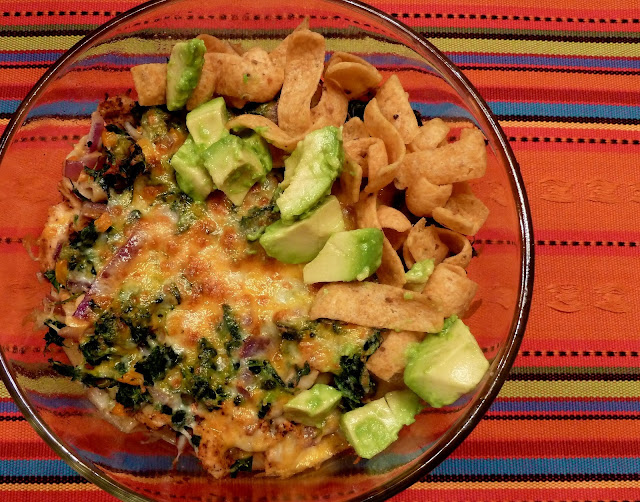Two Years Ago: Balsamic Chicken Watermelon Salad
I don't remember where I found this recipe, but I was on a coconut jag at the time and had vague visions of Chinese fried rice with shredded coconut in it, mostly because the name was "coconut fried rice". Maybe that doesn't sound all that great to you but not to worry, I was totally off base anyway. Sometimes being wrong turns out to be a good thing.
The coconut in this case comes in the form of coconut milk used to cook the brown rice, which imparts a hint of coconut to the finished dish. Combined with mild curry powder, the overall flavor profile is much more Malaysian or Indian than Chinese. The flavors are complex yet delicate. (I thought about adding some spiciness to the dish but finally decided against it because I was afraid it would overpower the coconut or curry.) You could make the flavors more bold by adding more coconut milk or curry powder, and you could certainly serve hot sauce on the side, but we very much liked it as is. (The Lawyer: "Have we had this before? This is really good!")
You can go vegetarian by using tofu, or add thinly sliced chicken or pork for meat people - directions are included for both. I used some thin-sliced pork chops I found on sale at the store. Compared to the original recipe, I cut down slightly on the amount of rice and meat and amped up the veggies which I do with pretty much any recipe.
Note that the recipe calls for making the rice in advance and chilling it, which helps the rice to brown in the pan. If you don't have the time, skip the chilling step and just go straight from cooking the rice to cooking everything else. It will still turn out fine.
print recipe
Coconut Curry Rice
Serves 4-6
Note: If you are using chicken or pork instead of
tofu, skip the tofu instructions and vice versa.
1 block extra-firm tofu plus 2 tablespoons soy sauce
-or-
6-8 ounces raw chicken or pork cut into thin bite-sized
slices
1 ¼ cups uncooked brown rice
1 can regular coconut milk
1 tablespoon coconut oil or canola oil
1 medium onion, chopped
1 medium red pepper, chopped
10-12 sugar snap peas, trimmed and sliced diagonally into
½” pieces
3 cloves garlic,
minced
2 teaspoons grated ginger
2 teaspoons curry powder
½ cup frozen peas
2 teaspoons soy sauce
1 cup roasted cashews
Rinse the rice and drain.
Combine 1¼ cups coconut milk with 1¼ cups water to make 2½ cups total
liquid. Place the rice in a medium
saucepan with the liquids and bring to a boil over high heat. Reduce heat to low, cover and simmer for
30-35 minutes until the liquid is absorbed.
Cool and place in the refrigerator for several hours.
(For the tofu:
Preheat oven to 325d. Drain and
press the tofu. Chop into cubes and toss
in a bowl with the soy sauce. Let
marinate for 10 minutes until the soy sauce is absorbed. Spread the cubes on a lightly greased baking
sheet and baked for 45 minutes, flipping midway. Remove and set aside.)
Heat a large non-stick pan over medium heat and add the
oil. (For the chicken or pork: add the meat to the pan and sauté for 3-4
minutes, stirring occasionally, until cooked through. Remove and set aside.)
Add the onions to the pan and sauté for 2-3 minutes, then
add the red pepper and sugar snaps and continue to sauté for 2 minutes
more. Add the garlic, ginger, and curry
powder and sauté for 30-60 seconds until fragrant. Add the rice and peas and mix to combine,
then let cook undisturbed for 1-2 minutes to develop a crispy crust on the bottom. Add the soy sauce and tofu, chicken or pork
and stir again, scraping the bottom, then continue to cook for a minute or two
until thoroughly heated through.
Serve hot topped with roasted cashews.



















